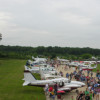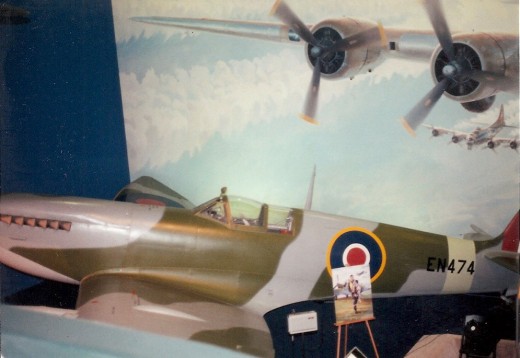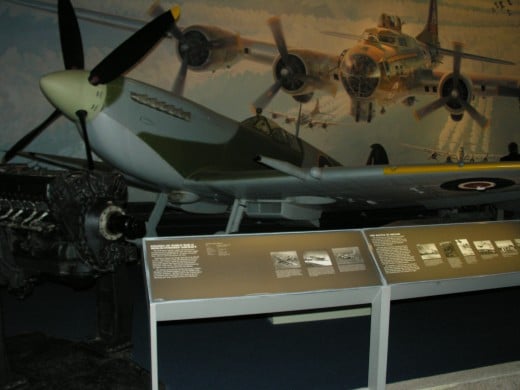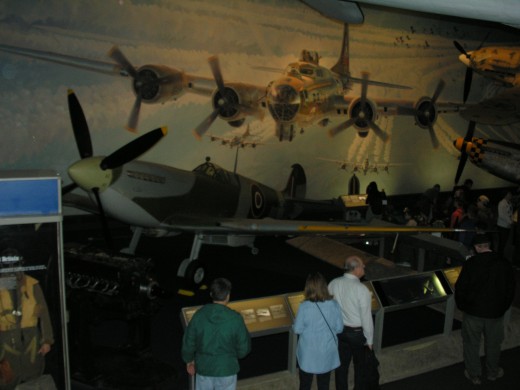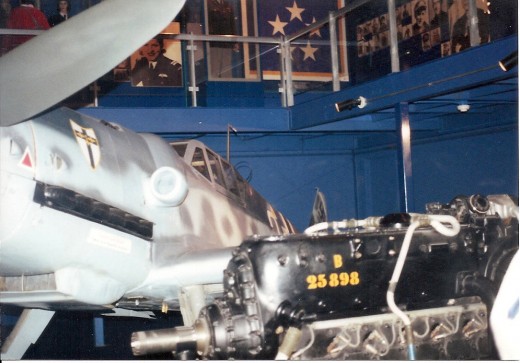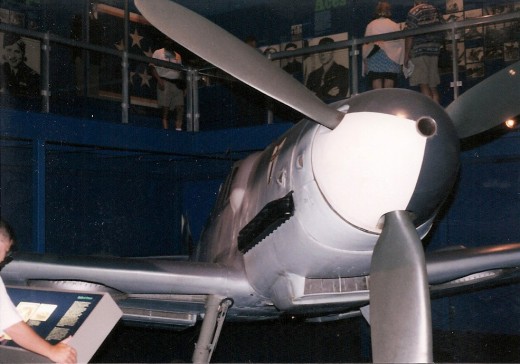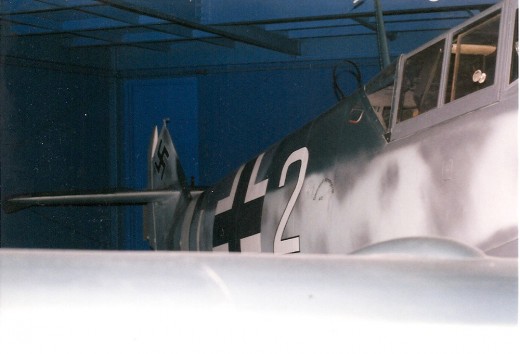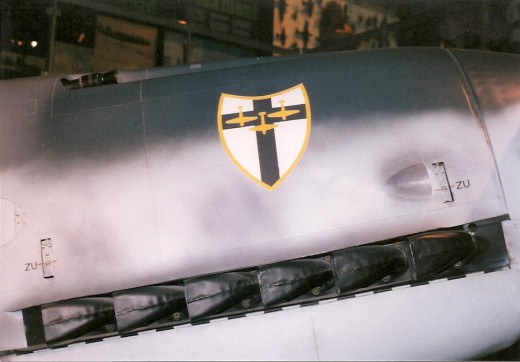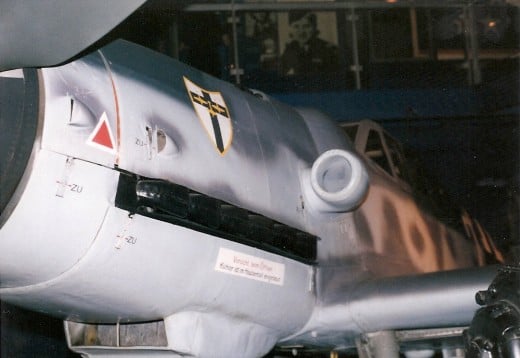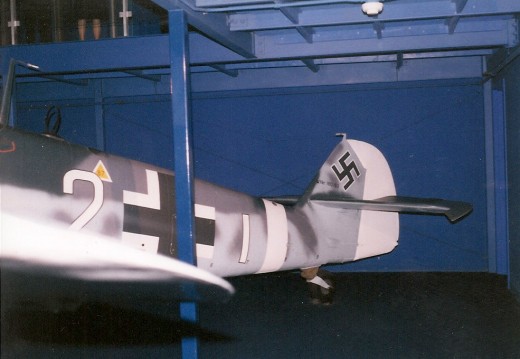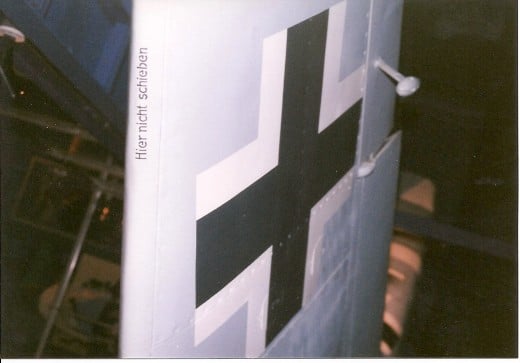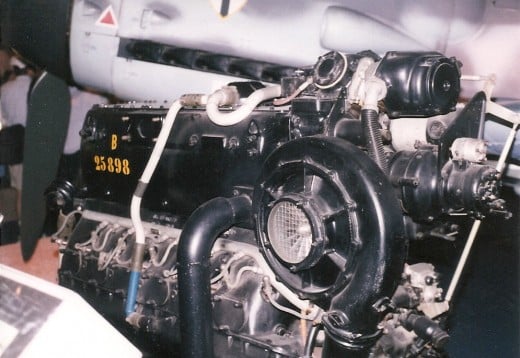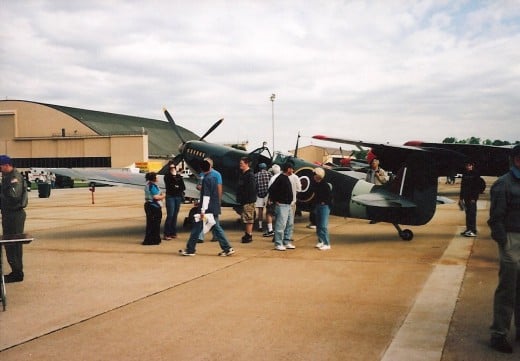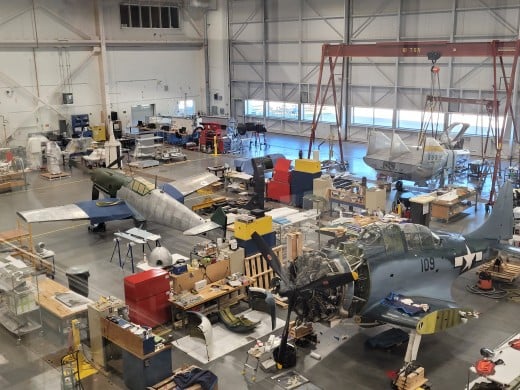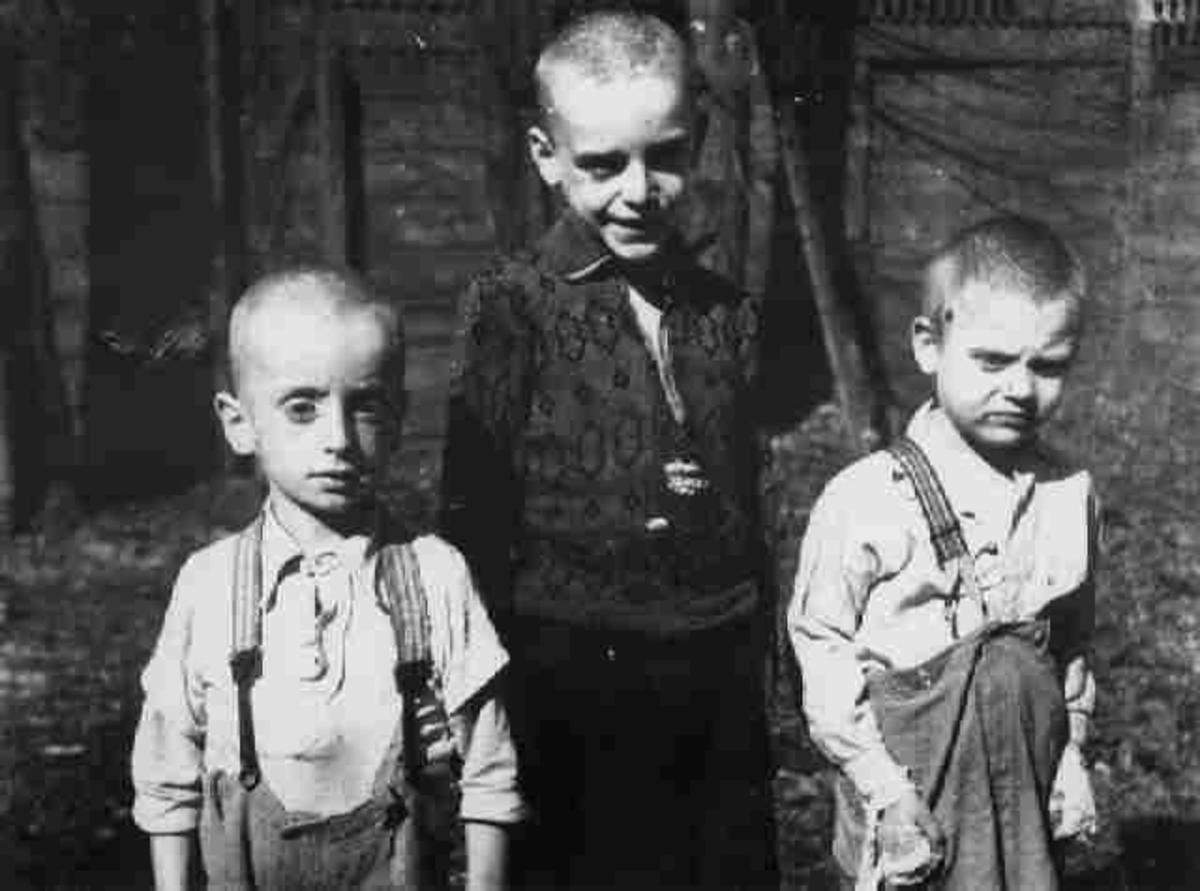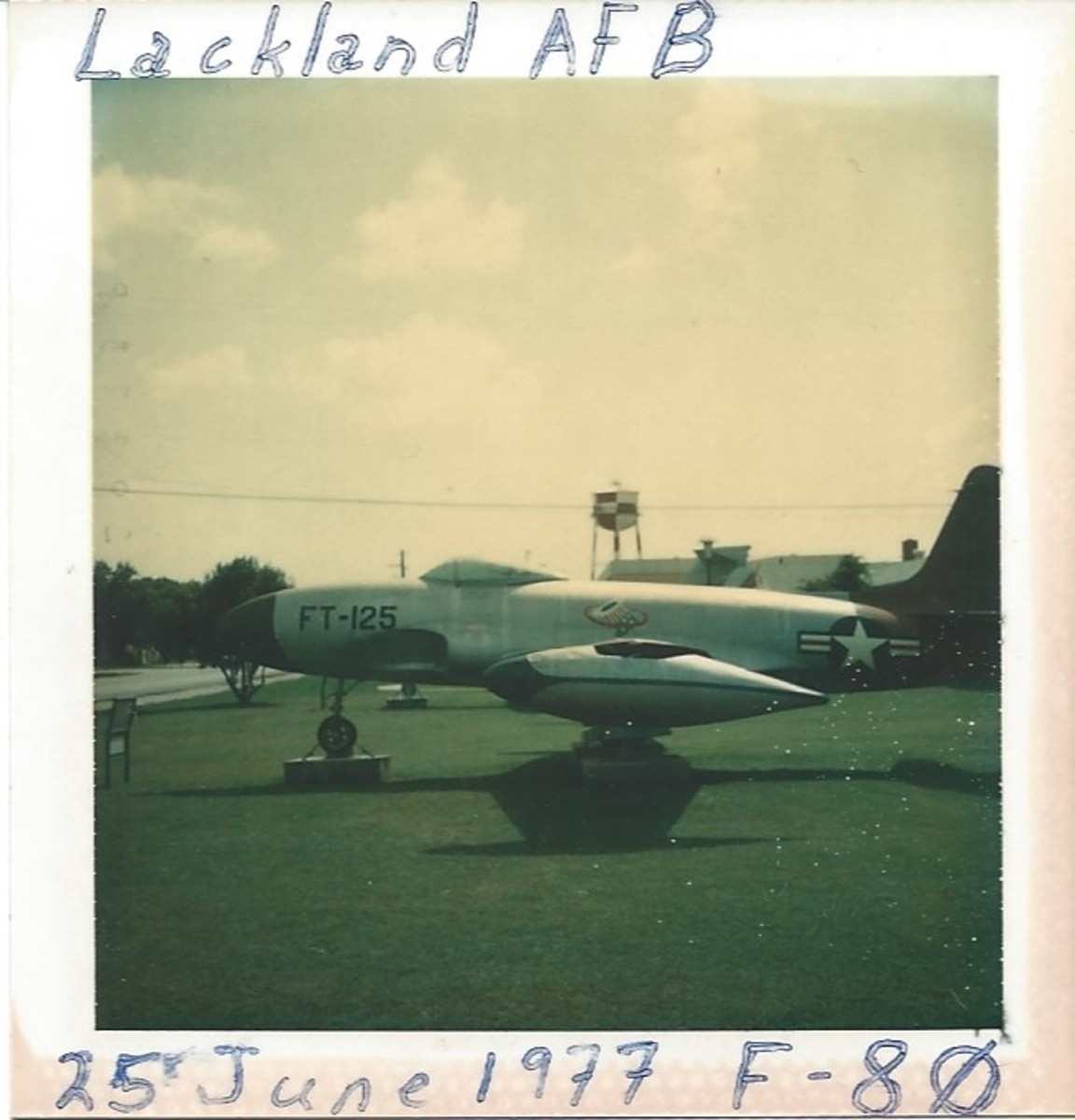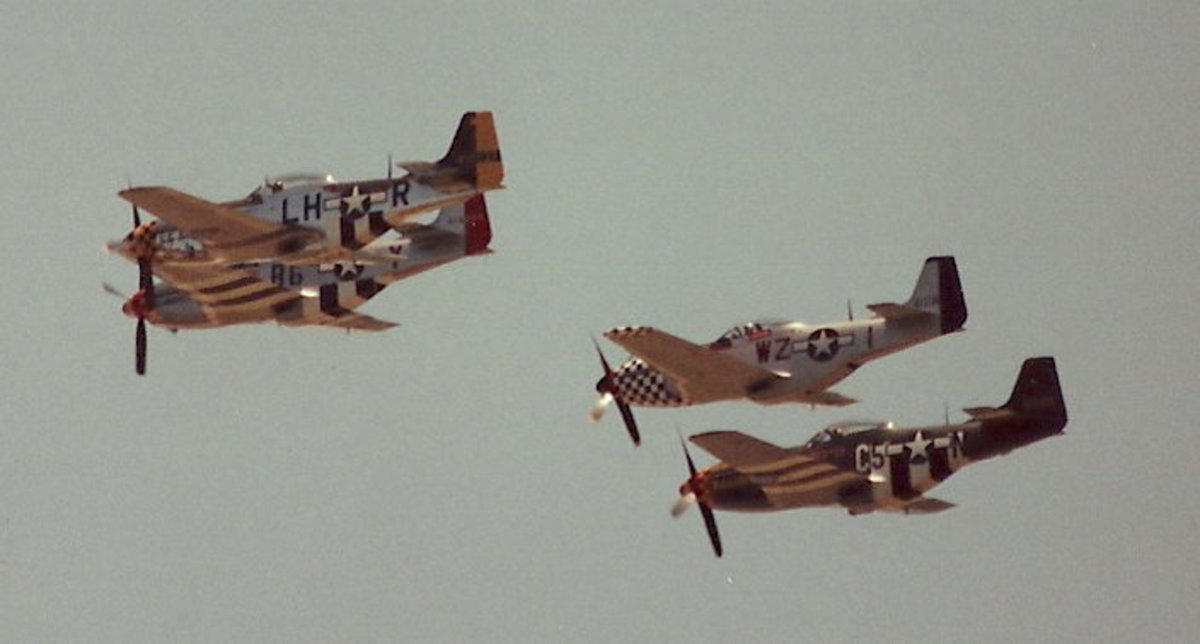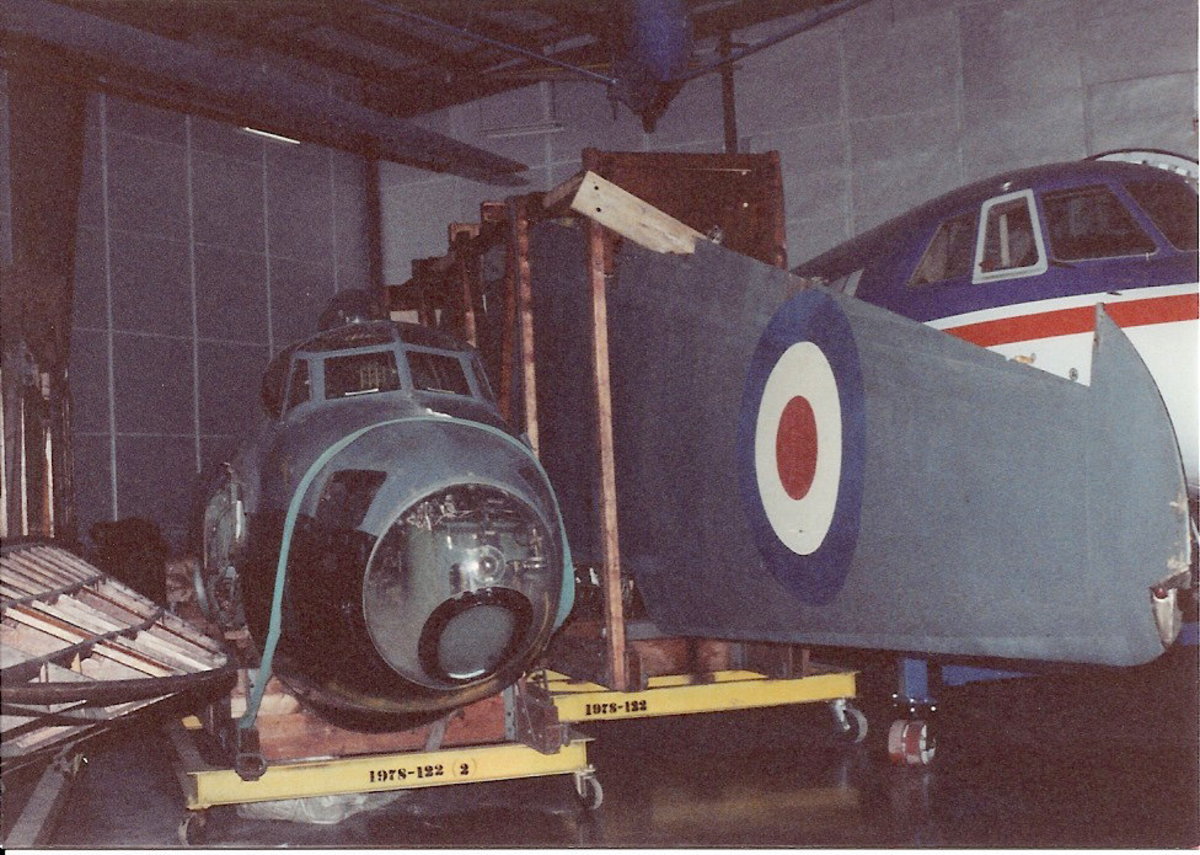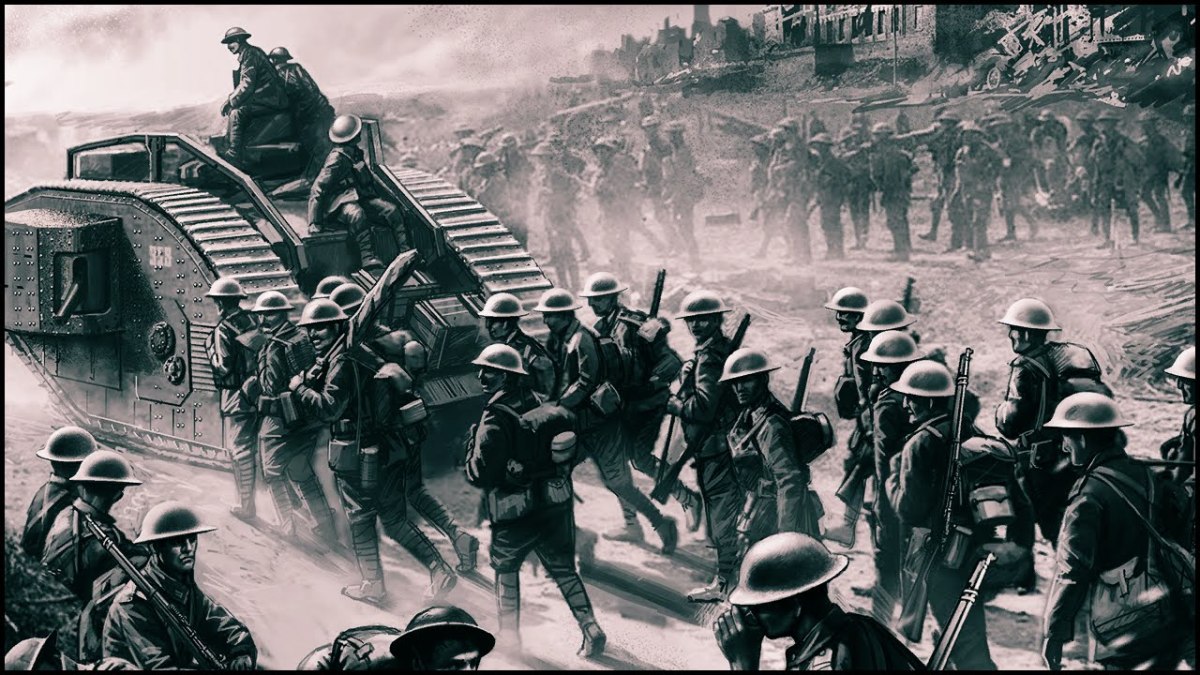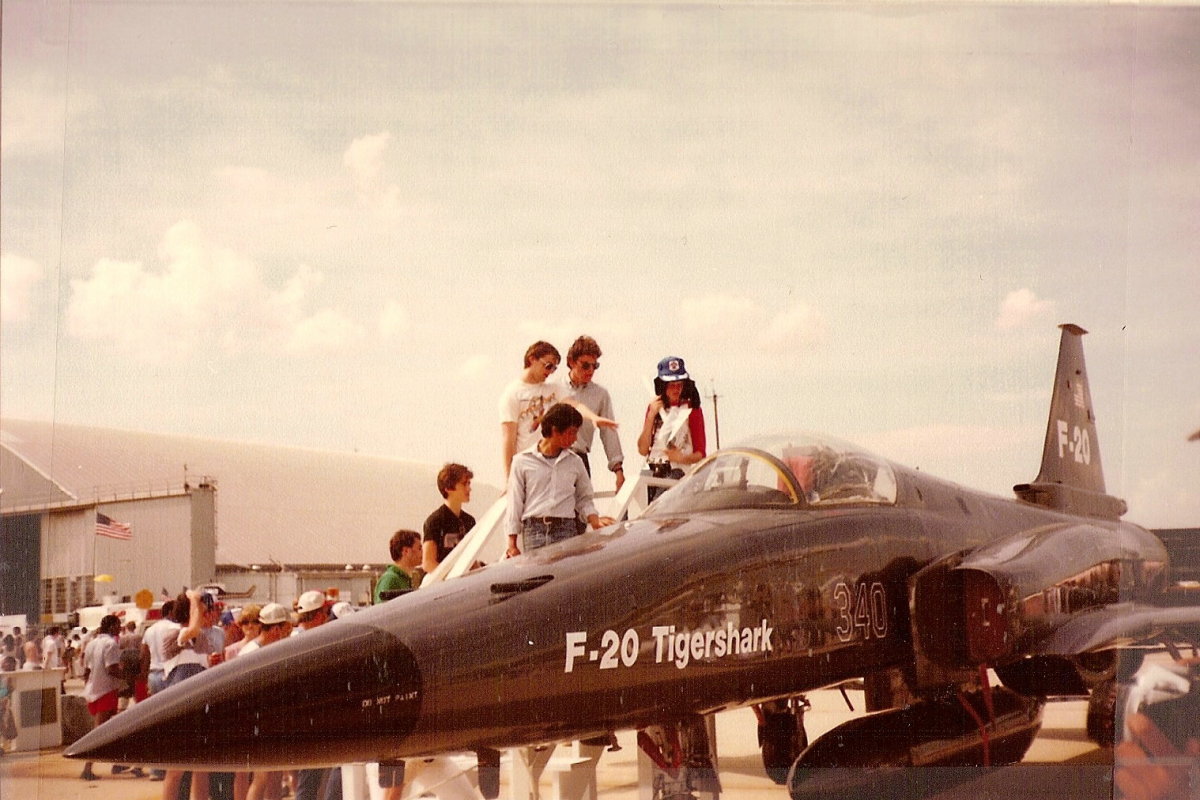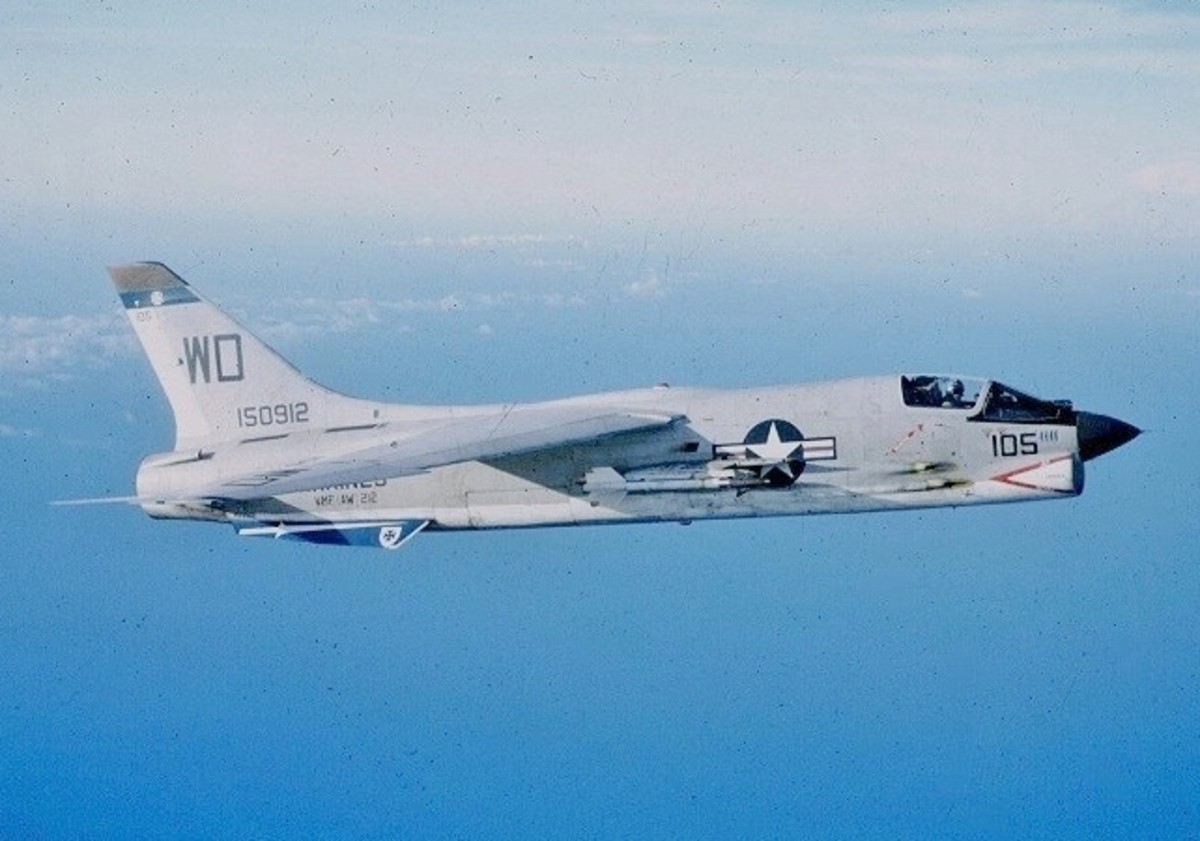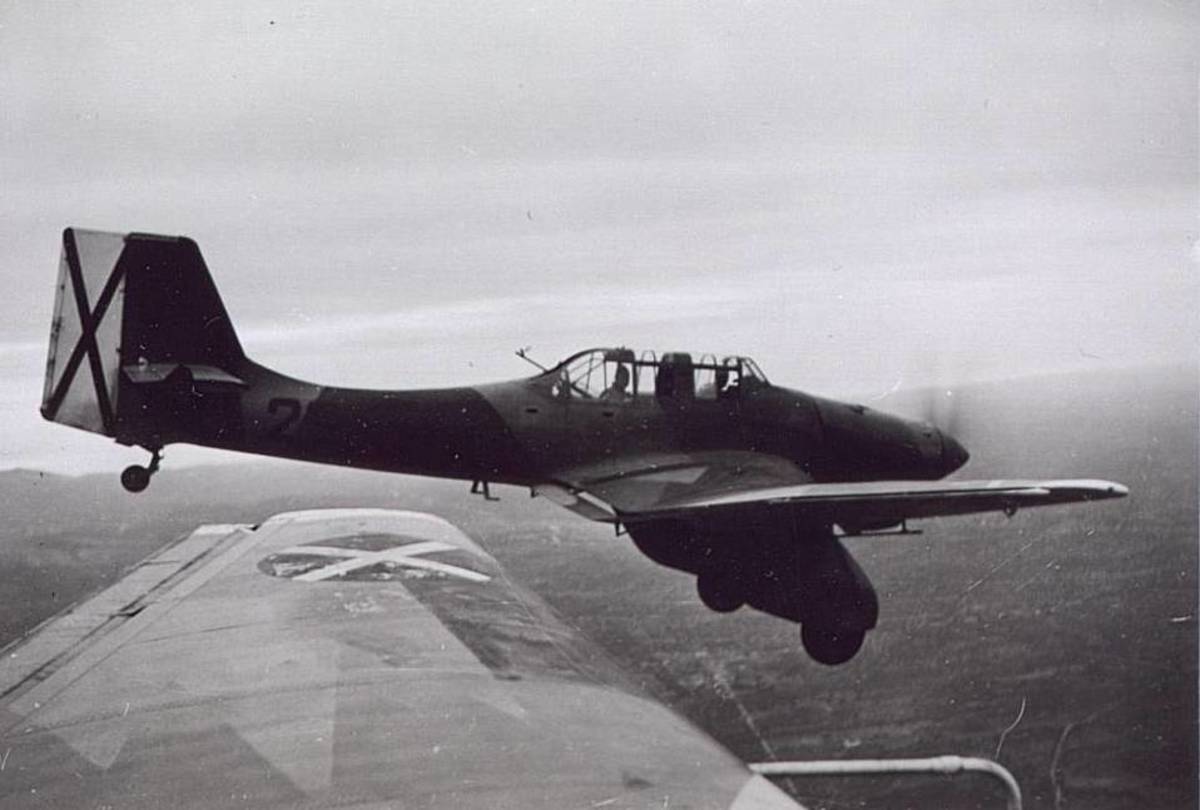- HubPages»
- Education and Science»
- History & Archaeology»
- Military History
Spitfire and Me-109 Legendary Opponents












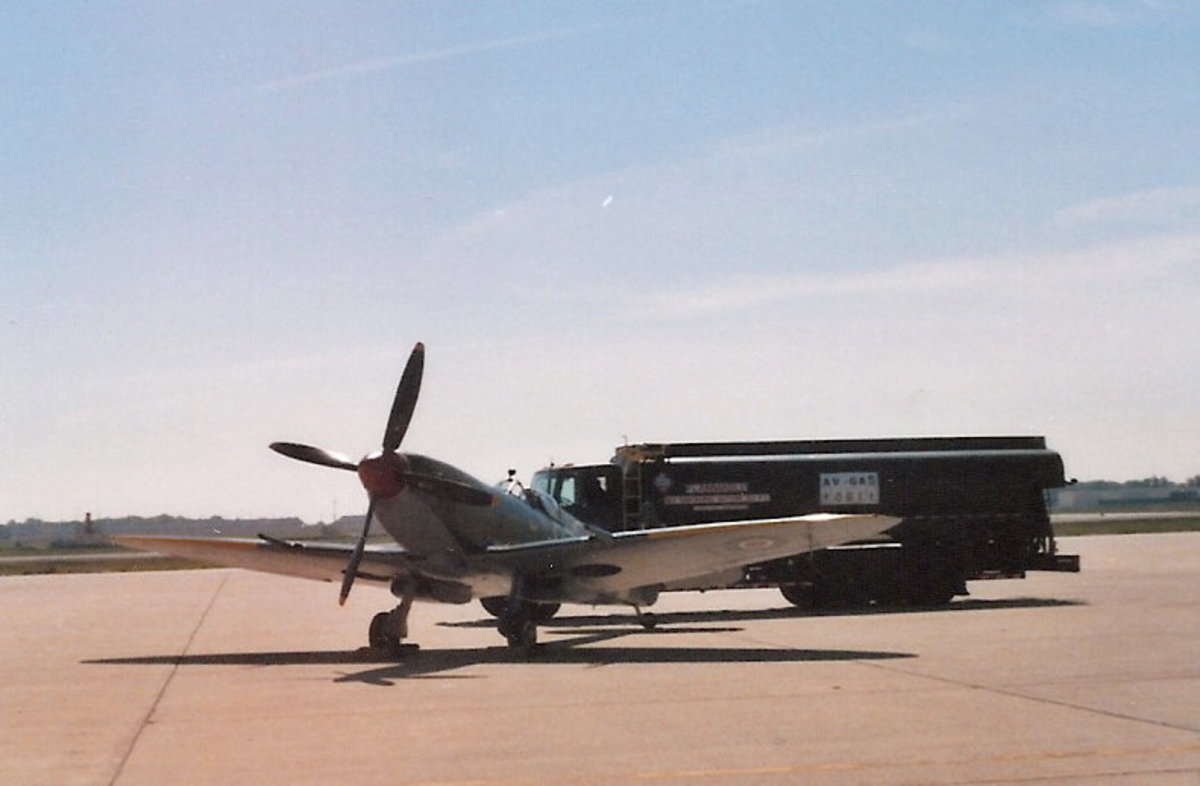

Legendary Opponents
The Spitfire and the Me 109[i] were iconic World War II aircraft. These aircraft had a deadly rivalry throughout World War II and beyond. These aircraft were generally loved by their pilots. The scream “Spitfire” would send fear in the hearts of Luftwaffe pilots. Royal Air Force (RAF) pilots knew the Me 109 should be respected. Ironically the engine for the Me 109 V1 was a Rolls-Royce Kestrel V.[ii] The Me 109 made its first flight in September 1935. The engine for the prototype Supermarine Spitfire K5054 was a Rolls-Royce Merlin I[iii]. The Spitfire’s first flight was March 5, 1936. There were many variant and sub-variants of these aircraft. Throughout World War II these aircraft had sturdier stable mates. These fighters had short combat radiuses. Through much of the war the RAF and Luftwaffe had other aircraft with comparable or superior performance. These aircraft remained front line fighters throughout World War II.
[i] The technical designation for this aircraft was the Bf 109 but both sides during World War II commonly referred to the aircraft as the Me 109.
[ii] Messerschmitt an Aircraft Album No. 2, by J. Richard Smith, © Ian Allen, 1971.
[iii] Vintage Aircraft Recognition Guide by Tony Holmes, © Harpers-Collins Publishers, 2005, Page 222.
Baptism of Fire
The Me-109 V1 made a flyover at the 1936 Olympics in Berlin.[i] In 1937 the German Condor Legion was flying missions in Spain in support of the Nationalists. The Russians were flying mission in support of the Republicans. The Russian fighters outmatched the obsolescent Luftwaffe fighters. This changed in April when the Me-109B-1s and B-2s arrived. Me-109s were superior to the Russian fighters and the Nationalists soon gained air supremacy. The Russian fighters were more maneuverable but the Germans developed tactics to fight against slower but more nimble opponents.
Spitfires first fired guns in anger on September 6, 1939. Spitfires and Hurricanes were sorted to intercept German aircraft. There were no German aircraft and the British fighters mistook each other for the enemy. The Spitfires shot down two Hurricanes.[ii] On October 16 German Ju-88 bombers launched an attack on Royal Navy ships off the coast of Scotland. The Germans mistakenly believed there weren’t any Spitfires based in Scotland. Spitfires shot down one Ju-88 piloted by Hauptmann Helmut Pohle. Hauptmann Pohle was the only survivor. The Germans lost another Ju-88 in the attack.[iii] On December 3, 1939 British Wellington Bombers attacked Heligoland Bight. Me-109s shot down at least 5 of the bombers, the 6th British bomber lost probably also fell to Me-109 fire.[iv]
The Spitfires and Me-109s fought for the first time during the evacuation of Dunkirk. Me-109s had the numerical advantage because they operated in larger units. The fighter sortie generation was 2,000 German and 1,764 for the British.[v] Over Dunkirk Me-109s and Spitfires were operating near the end of their operating radius. The Germans lost 92 aircraft to the British 106. These losses included 29 Me-109s, 48 Spitfires, and 49 Hurricanes.
[i] Messerschmitt an Aircraft Album No. 2, by J. Richard Smith, © Ian Allen, 1971.
[ii] World War II Almanac 1931-1945 by Robert Goralski, © 1981.
[iii] The Luftwaffe War Diaries by Cajus Bekker© 1966 by Macdonald & Company, Ltd.
[iv] The Luftwaffe War Diaries by Cajus Bekker© 1966 by Macdonald & Company, Ltd.
[v] Luftwaffe Fighter Aces by Mike Spick © 1996.
The Battle of Britain
In the Battle of Britain the Me-109 and the Spitfire were evenly matched. The top speeds were almost identical. Altitude determined which aircraft had the higher top speed in a dogfight. The Spitfire had the advantage in maneuvering. Me-109s had a higher service ceiling and were faster in the climb and dive.
The biggest disadvantage of the Me-109 was its range. Me-109 pilots had to be wary of their fuel otherwise they risked running out of fuel over the English Channel. An example of the fighting intensity and the dangers of the English Channel occurred on November 28, 1940. Helmut Wick became the highest scoring World War II pilot at the time with 55 kills. Later that afternoon he went on another mission. He shot down a Spitfire but was subsequently shot down by John Dundas. Rudi Pflanz then shot down Dundas.[i] Wick and Dundas bailed out over the channel but were never found.
The major difficulty for the Germans was protecting the bombers. At one point Hermann Göring demanded the fighters give the bombers a close escort. Major Adolf Galland pointed out such an escort would involve turning dogfights which would favor the Spitfire. Later when Göring asked the pilots what they needed Galland said Spitfires for his squadron. These words were repeated in the 1969 movie “Battle of Britain”. In Galland’s book, “The First and the Last”, he said he knew he didn’t choose the right words the moment he spoke them. He went on to say he preferred theMe-109 to the Spitfire.
The British won The Battle of Britain. The Germans lost twice as many aircraft as the British lost. Many of the German aircraft were bombers. Since the British were mostly fighting over their territory many of their pilots bailed out or crash landed safely and returned to the fight. Surviving Luftwaffe aircrew mostly became prisoners of war. The battle immortalized the Spitfire and made the Me-109 the legendary nemesis.
[i] Luftwaffe Fighter Aces by Mick Spick © 1996.
Me-109E-3
| Spitfire I
| |
|---|---|---|
Engine HP
| 1,100hp
| 1,030hp
|
Wing Loading
| 32lb/sq'
| 24lb/sq'
|
Max Speed
| 354mph
| 355mph
|
Ceiling
| 36,091'
| 34,000'
|
Rate of Climb
| 3,281'/min
| 2,530'/min
|
Range
| 412 miles
| 575 miles
|
Source: Luftwaffe Fighter Aces by Mike Spick (c) 1996
Advantage Luftwaffe
After The Battle of Britain the fighting over the Channel Front shifted to air combat over the English Channel and over France. This meant most of the surviving British pilots shot down became POWs. The Germans deployed the Me-109F which had an advantage over the Spitfire V in most areas. The Germans also deployed the Focke-Wulf FW-190. The FW-190 was also better than the Spitfire V in most areas. The Spitfire was still better than these aircraft in turning. Many considered the Me-109F the best version of the Me-109. It was a “pure fighter” designed primarily to shoot down other fighters. The Germans held this technological advantage over the British until the RAF deployed the Spitfire IX in force.
On August 19, 1942 the British launched a large scale amphibious raid on Dieppe. The RAF and USAAF[i] flew almost 2,500 fighter sorties in support of the raid. The amphibious raid ended in disaster. The British believed they won the day in the air. The reality was the Allies lost 114 aircraft, 92 of these were fighters, the Luftwaffe lost 48 aircraft 20 of these were fighters.[ii]
[i] United States Army Air Forces
[ii] Luftwaffe Fighter Aces, by Mike Spick © 1996.
Bf 109F-3
| Spitfire VB
| |
|---|---|---|
Engine
| 1,300hp
| 1,440hp
|
Wing Loading
| 35 lb/sq'
| 28 lb/sq'
|
Max Speed
| 391mph
| 374mph
|
Service Ceiling
| 39,370'
| 37,000'
|
Rate of Climb
| 4,291 '/min
| 3,650 '/min
|
Range
| 440 miles
| 470 miles
|
Source: Luftwaffe Fighter Aces by Mike Spick (c) 1996.
Spitfire Takes the Lead
The Spitfire IX was superior to the Me-109F. The Germans deployed the Me-109G which was better suited for dealing with bombers than the Me-109F but not as good in a fighter versus fighter combat. When the Me-109G was first deployed there were a series of crashes. One cost the life of Hans-Joachim Marseille, the leading ace against Western flown aircraft. His Me-109G caught fire in flight. He bailed out but his parachute failed to open.[i]
The Spitfire XIV increased the advantage the Spitfire had over the Me-109. The Luftwaffe deployed Me-109Ks at the end of 1944. It included many of the improvements that were in some of the later Me-109G sub-variants. These improvements included a fully retractable tail gear and a more streamline airframe. Few Me-109Ks saw service.
[i] Luftwaffe Fighter Aces, by Mike Spick © 1996.
Bf 109G-6
| Spitfire IX
| |
|---|---|---|
Engine
| 1,800hp
| 1,710hp
|
Wing loading
| 40lb/sq'
| 31lb/sq'
|
Max Speed
| 387mph
| 408mph
|
Service ceiling
| 38,550'
| 44,000'
|
Rate of climb
| 4,560'/min
| 4,150'/min
|
Range
| 450 miles
| 434 miles
|
Source: Luftwaffe Fighter Aces by Mike Spick (c) 1996.
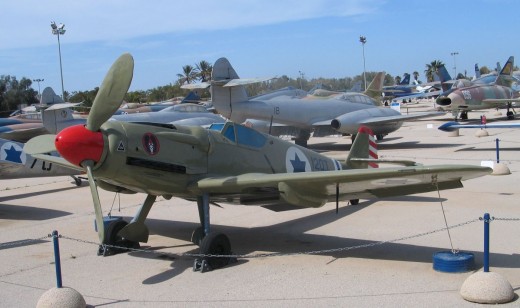
Friend and Foe
The first fighters in the Israeli Air Force were a Czechoslovakian variant of the Me-109G , the Avia S199. The S199s were fitted with a Junkers Jumo 211F engine instead of the usual Diamler Benz 605 engine. Me-109s always had poor takeoff and landing characteristics. The Jumo 211F’s high torque made these poor characteristics worse. The Czech pilots nicknamed the S199 the Mezec (mule). It was also unpopular with Israeli pilots. The Avias flew a number of ground attack and escort missions. On July 10, 1948 Syrian forces staged a counter attack against Israeli forces. Armed Harvard trainer aircraft supported the Syrian attack. S199 pilot Maurice Mann shot down a Harvard. Lionel Bloch pursued a Harvard over the Golan Heights. Bloch did not return. On July 18 Modi Alon shot down an Egyptian Spitfire. On October 16 Rudolph Augarten shot down a Spitfire. Later Israel also acquired Spitfires. In the 1948 conflict and aftermath the Avia S199s shot down 6 aircraft. The Israeli Spitfires shot down 15 aircraft.[i] The Spitfire kills included 3 RAF Spitfires shot down on January 6, 1949 and an RAF Tempest shot down on January 7, 1949. RAF pilot Ron Sayers and RAF Pilot Officer David Tattersfield died in these incidents.[ii]
[i] Fighters Over Israel, by Lon Nordeen© 1990.
[ii] Israel v the RAF – Caught in the middle – air combat between Israel and the RAF, (http://www.spyflight.co.uk/iafvraf.htm), last accessed September 3, 2016.
Performance versus Bragging Rights
The Spitfire and the Me 109 were evenly matched at the beginning of World War II. The advantage went to the Me 109 with the Me 109F. The advantage went to the Spitfire with the Spitfire IX. The Spitfire XIV increased that advantage and probably made it out of reach for the Me-109. The Spitfire was arguably the best piston engine fighter of World War II.
It seems allied pilots who flew the Me 109 thought little of the aircraft. Rudolph Augarten, who flew Avias, Spitfires, and P 51s for the Israeli Air Force preferred the Spitfire over the other two fighters. He made the preference on the strength of the Spitfire’s handling qualities.[i]
More Me-109s were built than any other fighter plane. Only the Ilyushin Il-2 “Stormovik” attack plane may have been built in greater numbers. Me-109s shot down more planes than Spitfires, and probably more than any other aircraft in history. The highest scoring fighter pilot, Erich Hartmann, scored his kills in Me 109s. Me 109 pilot Erich Rudorffer holds the record for shooting down the most planes in a single sortie, 13.[ii]
[i] Fighters Over Israel, by Lon Nordeen© 1990, P21.
[ii] Messerschmitt Aces, by Walter A. Musciano, © 1982.
This content is accurate and true to the best of the author’s knowledge and is not meant to substitute for formal and individualized advice from a qualified professional.
© 2016 Robert Sacchi
